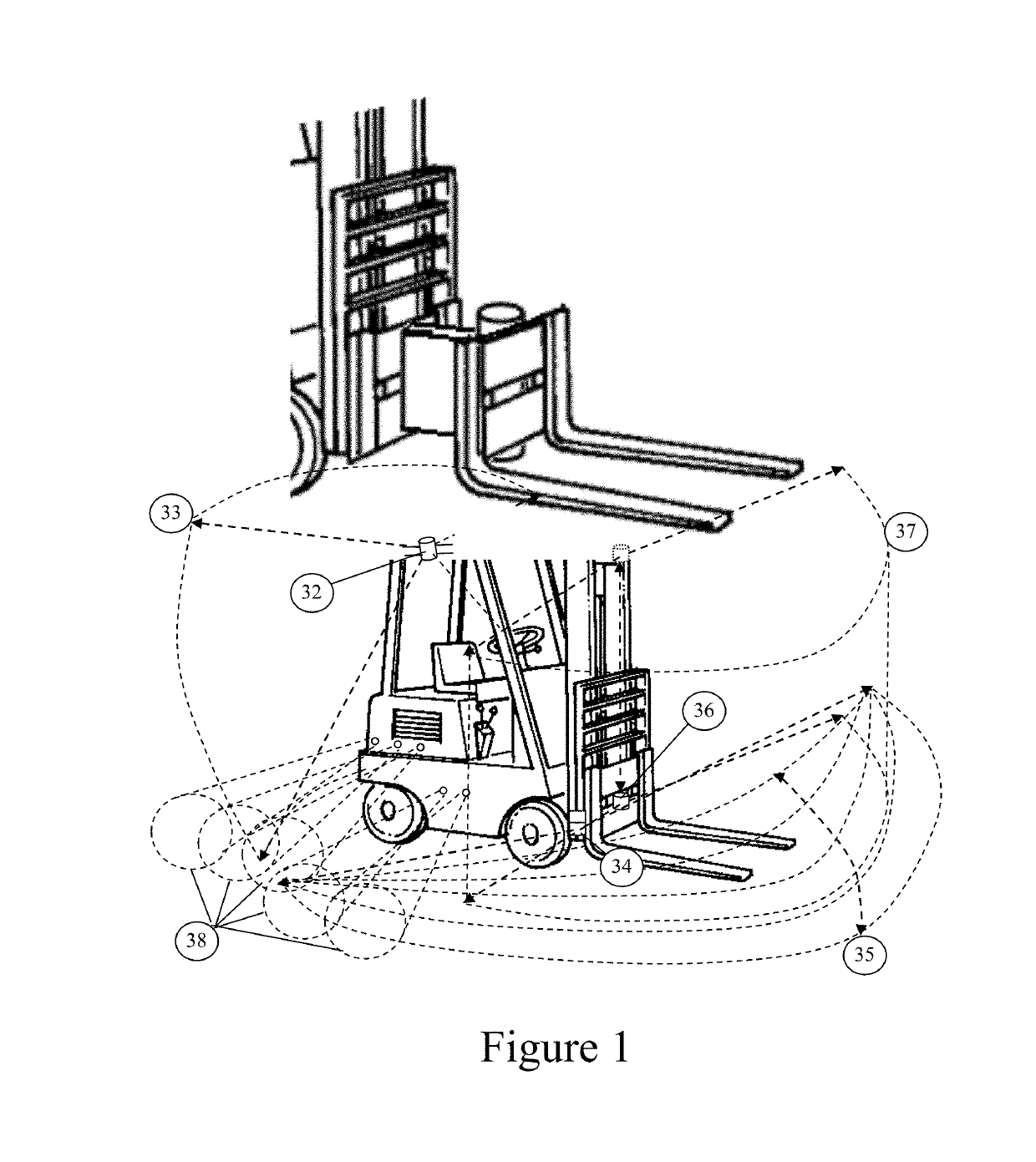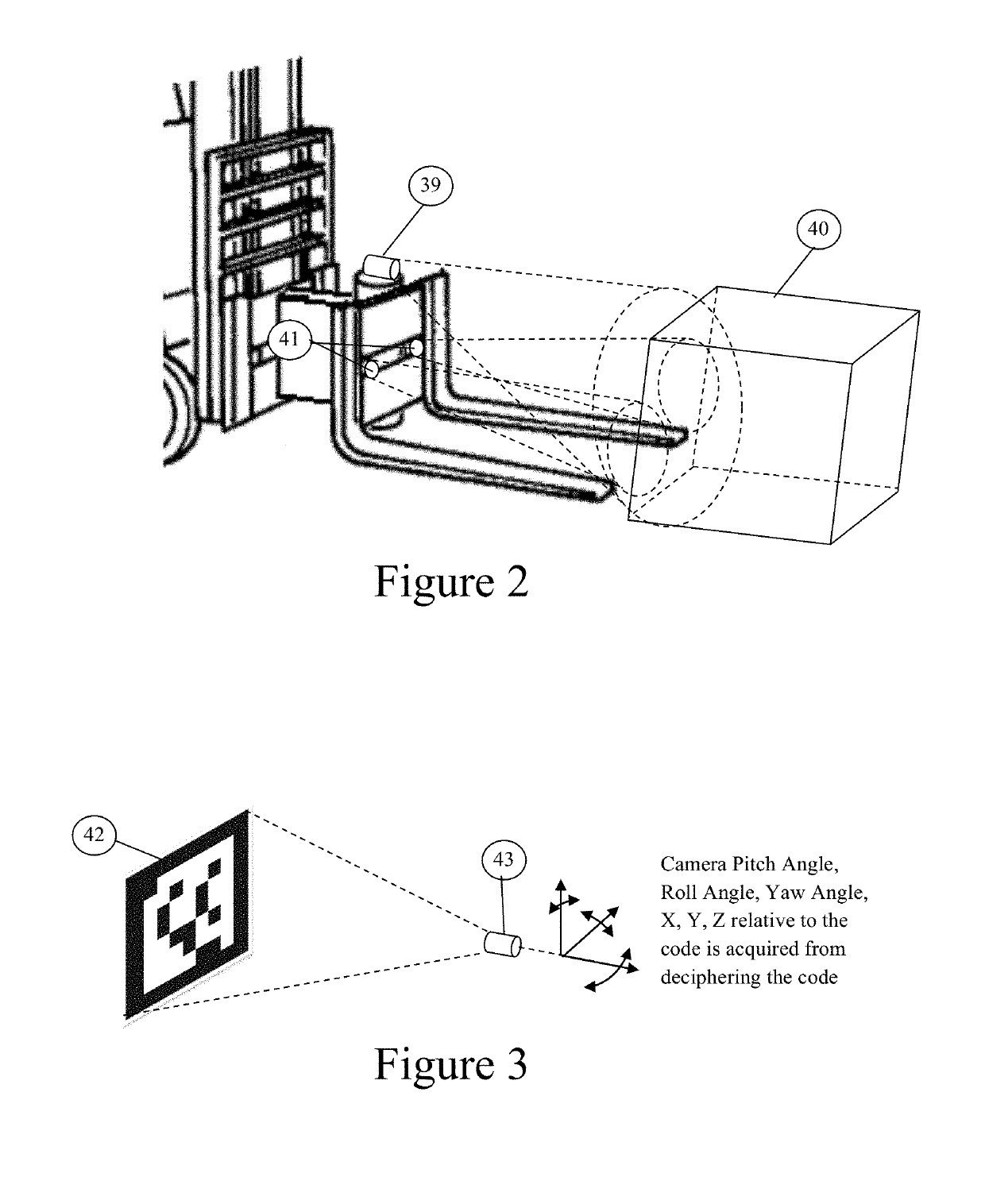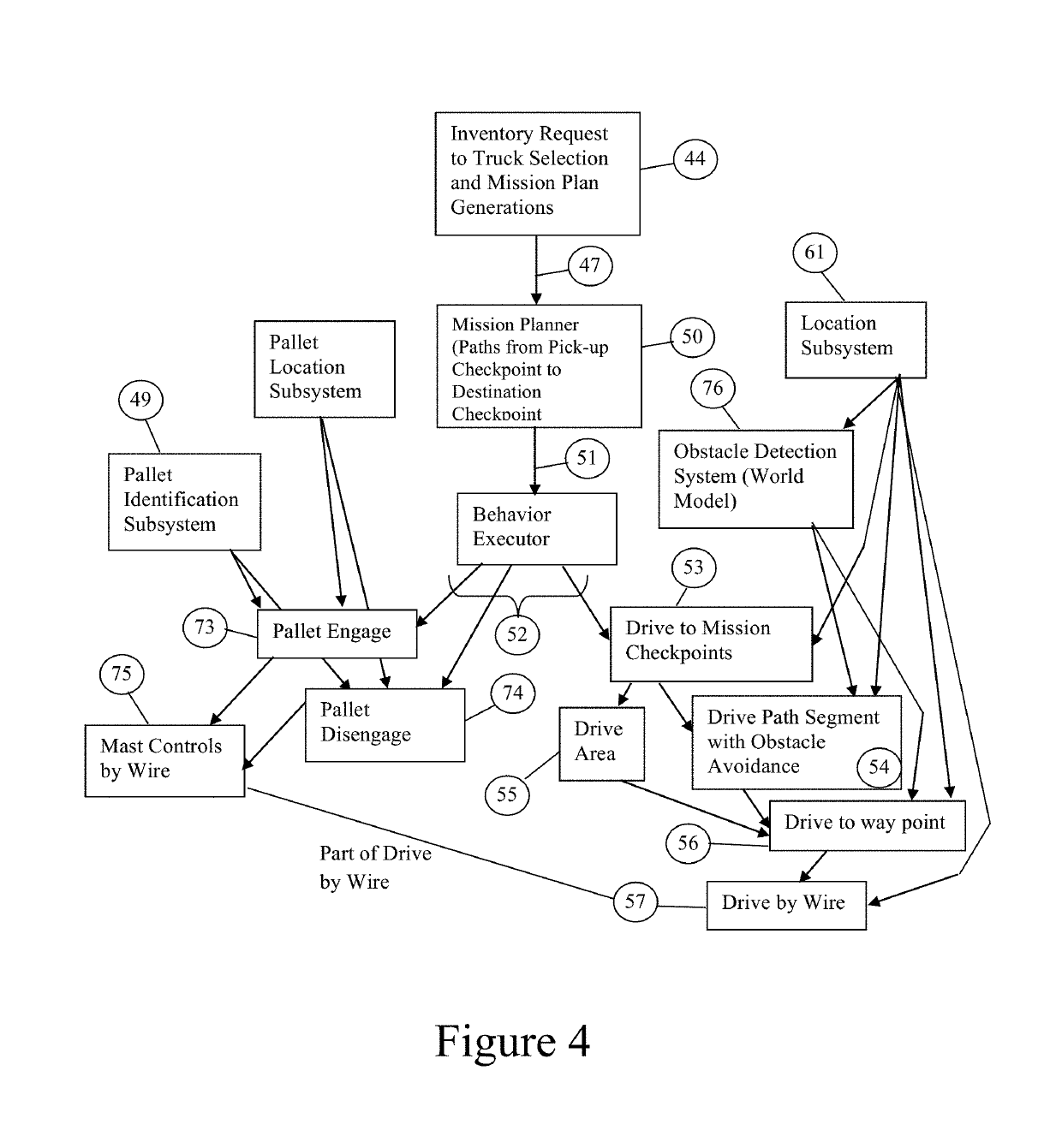Path and load localization and operations supporting automated warehousing using robotic forklifts or other material handling vehicles
a robotic forklift and automated warehousing technology, applied in vehicle position/course/altitude control, process and machine control, instruments, etc., can solve the problems of inability to use gps indoor navigation, high installation cost of embedded wires or magnetic markers, and poor wear resistance. , the effect of less maintenance or cleaning, and robust wear resistan
- Summary
- Abstract
- Description
- Claims
- Application Information
AI Technical Summary
Benefits of technology
Problems solved by technology
Method used
Image
Examples
Embodiment Construction
[0066]This invention resides in an automated material handling, transporting supporting inventory management system that removes the requirement to operate fully manually using conventional vertical storage and retrieval machines and or cranes. The approach assumes use of conventional forklifts and similar container transport platforms, some equipped with automation sometimes operating safely along with manually drive lifts into and out of the warehouse. In addition, some manual systems may be enhanced with automation to support more productive automated load acquisition and placement as well as to improve operator safety by cueing proximal obstacles to the operator in real time, as disclosed in the '561 Patent referenced herein.
[0067]As further described in the '561 Patent, driverless vehicle navigation GPS and inertial dead reckoning provides an effective technique for automated truck self-location (and therefore provides a convenient means for controlling the truck to a predefine...
PUM
 Login to View More
Login to View More Abstract
Description
Claims
Application Information
 Login to View More
Login to View More - R&D Engineer
- R&D Manager
- IP Professional
- Industry Leading Data Capabilities
- Powerful AI technology
- Patent DNA Extraction
Browse by: Latest US Patents, China's latest patents, Technical Efficacy Thesaurus, Application Domain, Technology Topic, Popular Technical Reports.
© 2024 PatSnap. All rights reserved.Legal|Privacy policy|Modern Slavery Act Transparency Statement|Sitemap|About US| Contact US: help@patsnap.com










